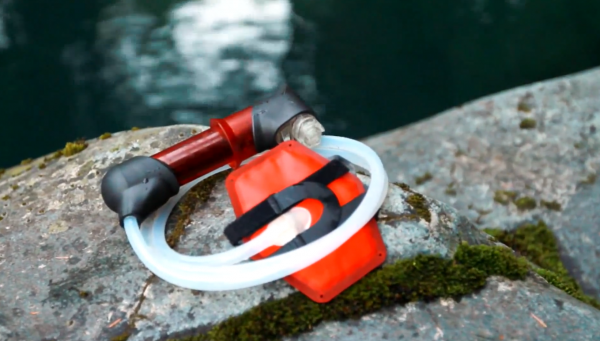MSR HyperFlow™ Microfilter: Behind the Gear

MSR Category Director Chris Barchet answers a few questions about the design and performance of the MSR HyperFlow microfilter.
Who was the HyperFlow microfilter engineered for and why?
Today’s outdoor adventurers are going faster and farther. They need solutions that increase their speed and efficiency in the mountains. So the design goals of the HyperFlow were very simple: It needed to be light and it needed to be fast. Most pump filters weigh about a pound and produce around 1 liter of water per minute. The HyperFlow comes in under 8 ounces and delivers 3 liters of clean water per minute. It’s the lightest and fastest pump available. We engineered it for anyone who needs a reliable supply of clean water on adventures where weight or speed is a priority.
What makes the HyperFlow design unique in the wide landscape of filters?
Beyond its ultralight design, it uses hollow fiber technology to deliver water 3 times faster than most other filters. Also, the Quick-Connect cap makes a fast connection to any widemouth bottle, making it very versatile.
What exactly is hollow fiber technology?
Hollow fiber was developed in the medical industry to separate particles in blood and other fluids. It’s effective for water filtration because the fibers’ pore sizes can be controlled to allow water to pass through but not harmful microbes.
The filter consists of a bundle of these fibers. Each fiber looks more like a straw, with a hollow center. The walls of the fibers have those microscopic pores. Water enters the fiber and the force of the pump pushes it through the pores. The harmful microbes and particulates are trapped inside the fibers until the filter is backflushed.
How important was tool-free maintenance in the design?
To clean the HyperFlow and ensure consistent flow, water needs to be pushed backwards through the hollow fiber. This is known as backflushing. Filter life is greatly increased by frequent backflushing, so we needed to make it easy to do. The design allows you to backflush, replace the filter or perform any maintenance without the need to bring extra tools.
Where are the filters manufactured? Why?
MSR assembles and tests all filters at our manufacturing headquarters in Seattle. This allows us to carefully control this critical piece of safety equipment. In Seattle we have a lab that allows us to perform a 100% quality inspection on all the filters. We ensure every filter going into the field meets NSF protocol P231 for removal of bacteria (99.9999%) and protozoa (99.9%). Very few water treatment companies can make that claim.
